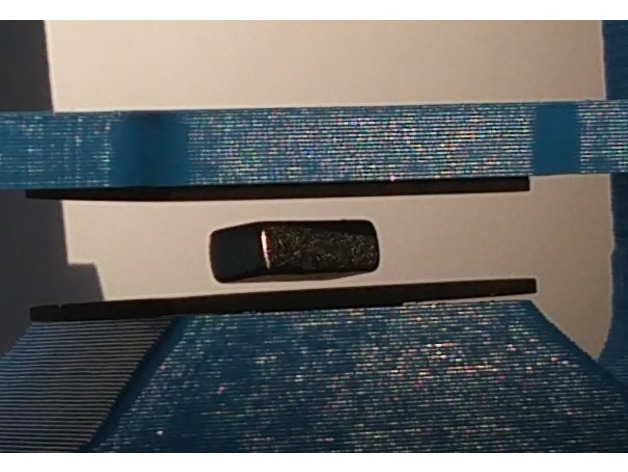
Magnetic levitator
thingiverse
In 2002, a physicist named Samuel Earnshaw boldly claimed that magnetic levitation is impossible using stationary magnets alone. He insisted that an external force must be present to achieve stable levitation. Today, we refer to this concept as Earnshaw’s theorem. This innovative device makes it possible for a small magnet to hover steadily via an external force created by diamagnetic surroundings – specifically, pyrolitic graphite sourced from (eBay). Diamagnets react to the external magnetic field in such a way that they repel the magnetic field, effectively creating an external stabilizing force for the small magnet. The small magnet is actually lifted by the large magnet at the top, but without the graphite, there would be no stable position for the small magnet to levitate – it would remain on the bottom plate or be pressed against the graphite holder. This device showcases how subtle diamagnetic forces can be utilized for fun and educational purposes. The small magnet can be easily rotated by blowing air, and it will rotate for a considerable amount of time before coming to a stop (https://youtu.be/QUugLxMSQSQ). All that is required is to stabilize the small magnet in the small gap between the two graphites – simply do this by rotating the screw until equilibrium with gravity is achieved. Printer Settings: Printer: Prusa MK2 Rafts: No Supports: No Resolution: 0.2 Infill: 10% How I Designed This I used Autodesk Inventor to design this project, and I am willing to share the design. Overview and Background This device is rooted in basic principles of material science and could be a valuable teaching tool when discussing paramagnetic/diamagnetic/ferromagnetic materials. Lesson Plan and Activity Activity: Try finding the stable position of the small magnet without graphite by turning the screw. This will allow you to understand the equilibrium between magnetic dipolar force and gravity. Add top graphite, leaving a big gap. You'll find two stable positions – one on the bottom and one on the top – both allowing levitation. Adjust the gap so that the magnet levitates in the middle. Blow air gently to make it rotate. Try illuminating it with a laser! With a symmetrically designed magnet, you should get rotation. Materials Needed 1. A large lifting magnet (NdFeB - 12x12x12 mm) 2. A small magnet (NdFeB - smaller than the graphite) 3. Two graphite sheets (20x20x1 mm (eBay)) 4. Two M3 screws
With this file you will be able to print Magnetic levitator with your 3D printer. Click on the button and save the file on your computer to work, edit or customize your design. You can also find more 3D designs for printers on Magnetic levitator.
